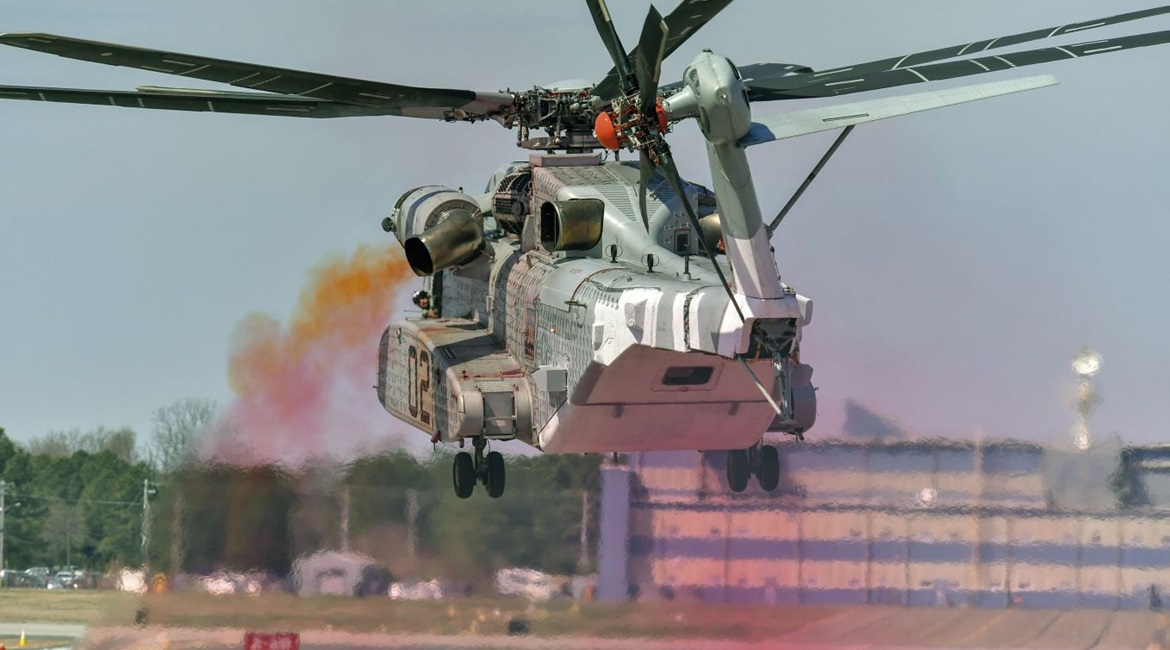
A Pentagon and Sikorsky team has modified the US Marine Corps (USMC) CH-53K King Stallion heavy-lift helicopter to reduce the severity of the aircraft’s engine integration issues.
The CH-53K will be powered by three new General Electric T408-GE-400 turboshaft engines, which are more powerful and fuel efficient than the T64 engines outfitted on the legacy CH-53E Super Stallion. The CH-53K is fitted with an advanced drive system incorporating a multiple-path split-torque gearbox with load-sharing capability, which enables the helicopter to use the extra power of the three engines.

A CH-53K performs EGR testing on 4 April. The coloured oil smoke indicates rotor wake. (US Marine Corps)
However this tri-engine propulsion system also created several integration issues, including exhaust gas reingestion (EGR), engine bay cooling, and hot gas impingement, according to a 17 December USMC statement. EGR occurs when the hot engine gasses are ingested back into the system. It can cause anything from increased lifecycle costs, poor engine performance and degradation, time-on-wing decreases, engine overheating, and even engine stalls.
US Navy spokesperson Megan Wasel said on 18 December that the CH-53K modifications included: exhaust duct geometry changes, increasing air flow into engine bays, adding heat shields, and minor alterations to the engine software. Wasel said on 17 December that the service reduced the severity of EGR, engine bay cooling, and hot gas impingement with the CH-53K modifications.
This Pentagon and Sikorsky ‘Tiger Team’s’ work started in April, with experts completing more than 30 test events and evaluating 135 potential design solutions for engine integration. Team members worked different root cause analyses in parallel, determining the cause and developing design models to mitigate causes for EGR. From those models, iterative flight testing resulted in a validated model to assess the most promising answer.
Looking to read the full article?
Gain unlimited access to Janes news and more...






